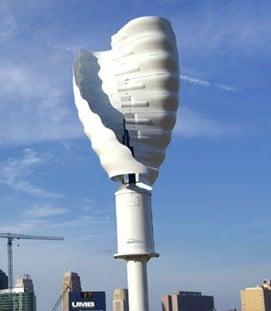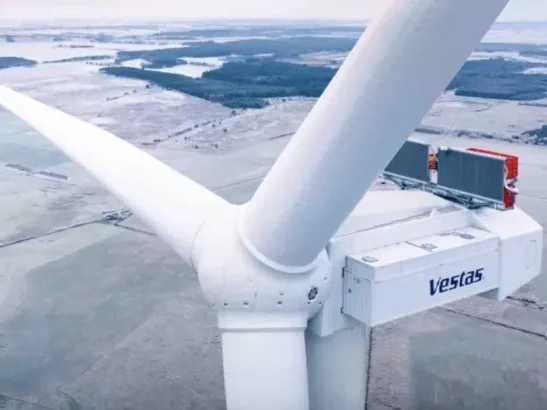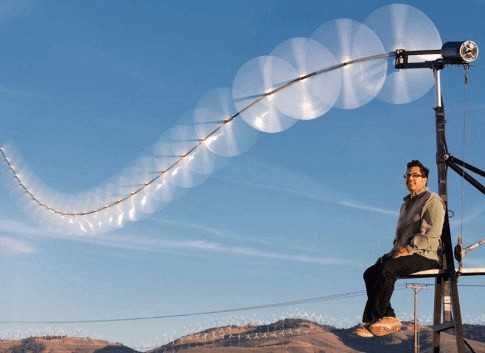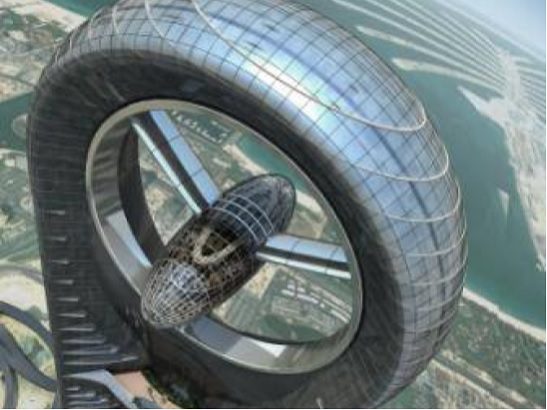Savonius Wind Turbine – VAWT Design
A Savonius wind turbine is what’s known as a VAWT kind of generator, or vertical axis wind turbine generator. It operates in a similar fashion to a cup anemometer which is a device that measures the velocity of the wind, so it’s also categorized as a drag-type VAWT. They usually have a potency rating of almost 15% which is really rather high compared to potency factors with HAWT types (horizontal axis wind turbine).
They were conceived by the Finnish engineer Sigurd J. Savonius in 1922. Johann Ernst Elias Bessler ( born 1680 ) was first to try to build a horizontal windmill of the Savonius type in the city of Furstenburg in Germany in 1745. He was building his wind turbine when he slipped to his demise from atop the framework. Construction wasn’t finished though his basic framework and structure still exist. Savonius turbines are one of the most simple turbines. Aerodynamically, they’re drag-type devices, composed from 2 or 3 scoops. Looking down on the rotor from above, a two-scoop machine would look like an “S” shape in cross-section. Thanks to the curve, the scoops experience less drag when moving against the wind than when moving with the wind. The differential drag causes the Savonius turbine to spin. Because they’re drag-type devices, Savonius turbines extract a lot less of the wind’s power than other similarly-sized lift-type turbines. Lots of the swept area of a Savonius rotor is close to the ground, making the general energy extraction less efficient because of lower wind speed at lower heights.

Vertical axis windmills like the Savonius design have been about since about the 9th century and can be traced back to early Persia. These early designs overcame for a considerable time. Savonius turbines are used whenever cost or trustworthiness is way more vital than potency. For instance, most anemometers are Savonius turbines, because potency is totally unimportant for that application. Much bigger Savonius turbines have been employed to generate electrical power on deep-water buoys, which need small quantities of power and get little upkeep. Design is simplified because, unlike HAWTs, no pointing mechanism is needed to make allowance for shifting wind direction and the turbine is self-starting. Savonius and other vertical-axis machines aren’t often hooked up to electrical power grids. They can often have long helical scoops, to give smooth torque. Savonius turbines are thought to be one of the most simple VAWT generator available. They’re customarily made with 2 or three scoops to catch the wind, so they’re considered a drag-type of a gadget. This scoop kind of design also makes this kind of device more aerodynamic.
When the wind contacts the rotor of the wind turbine, the differential drag involved ends in the spinning on the vertical axis, thus changing the wind’s kinetic energy into usable mechanical energy.
Since the blades are mounted vertically, there is not any need to rotate the windmill to catch the wind. Standard horizontal designs need to be mounted on a pivot that permits them to revolve readily and track the changing wind. Often minimal electricity is generated while the blades are re-orienting into the wind.
In contrast, the better vertical alignment can always be picking up a transient breeze the horizontal style might miss. One of the main blessings of the Savonius design is that it is quiet and thus acceptable for suburban communities. There are no big loud blades with which to bother neighbors or local zoning commissions. An additional advantage is that its compact blades appear to pose a lot less of a hazard to passing birds over its horizontal axis cousin.
The most ubiquitous application of the Savonius wind turbine is the Flettner Ventilator which is often seen on the roofs of wagons and buses and is employed as a cooling gizmo. The ventilator was developed by the German aircraft engineer Anton Flettner in the 1920s.
It employs the Savonius wind turbine to drive an extractor fan. The vents are still manufactured in the United Kingdom by Flettner Ventilator Limited. The Savonius wind turbine’s main application is the creation of mechanical energy and then changing it into electricity by employing the kinetic energy of the wind. Best potency factors require using them for home or smaller electricity applications. Ideally fitted for the grinding of grain or pumping water due to their higher torque factors and slower rotation Savonius turbines are environmentally-friendly and don’t harm the atmosphere by releasing dangerous contaminants. Tiny Savonius turbines are occasionally seen used as advertising signs where the rotation helps to draw attention to the item publicized.



